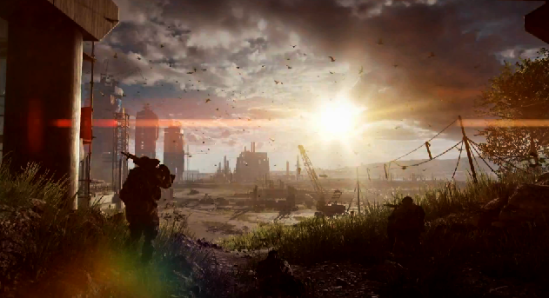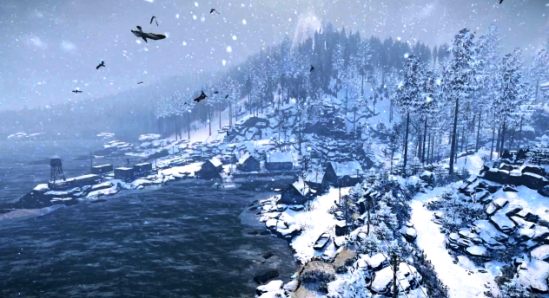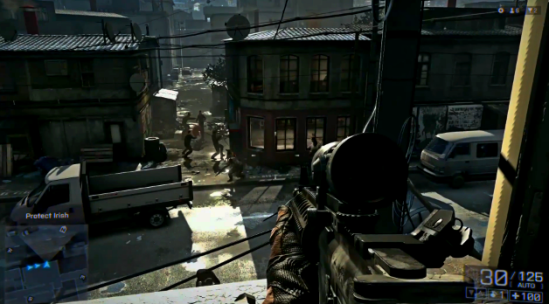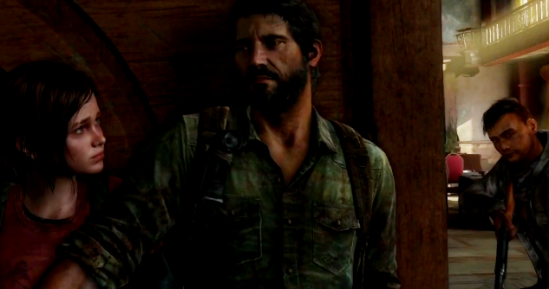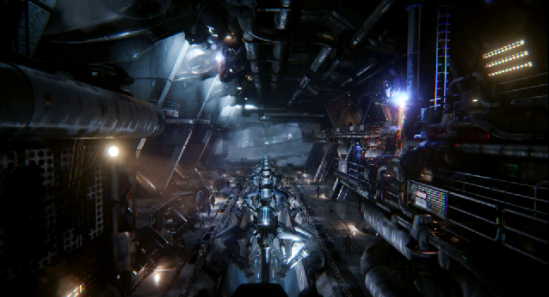The next gen of consoles are arriving shortly and there’s an underlying theme that just keeps cropping up; realism. Whether that’s PS4′s more advanced DDR5 graphics slaughtering the Xbox One or developers’ fascination with open worlds at E3, the gaming experience is set to replicate real life even more closely.
Gamers have demanded better specs with each passing generation and despite differences getting smaller and more difficult to achieve, this hasn’t stopped the recent Frostbite Engine 3, CryEngine 3 and Unreal Engine 4 producing some incredible graphics that raise the bar once again.
The next step is clearly motion control and virtual reality but until then it’s the graphics that will get the main focus.
Personally, I feel developers are putting too much emphasis on graphics that sometimes the mechanical basics of realistic gaming are almost forgotten.
Let’s be clear here though – not every game wants to feel and look as realistic as possible. We’re talking mainly FPS, stealth and action genres and even then, some will prefer a more arcade-like feel. Call of Duty, Battlefield and the like are just some which try to provide an authentic experience.
Graphically, these games are stunning but do these games replicate a realistic shooting experience?
It’s obviously a difficult balance between complete realism and making the game enjoyable and playable. Obviously no one wants to die once and then have to sit out the rest of the round but nevertheless, is it really realistic to continuously respawn and ‘have another go’?
Clearly there’s going to be some compromise with practicality but there’s still a lot developers can improve on if they really want to push an authentic gaming experience.
1. More Obvious Consequences of Actions & Failure
Games are built around the principle that you can take multiple takes to complete a level and restart. If something doesn’t work, you begin at a certain part and go again until you are able to complete the area or find another way around things. Often, that fact you know you can just begin again allows you the freedom to find the perfect route through levels.
Whilst satisfying once completed, life rarely gives you a second chance – especially if you’ve been blown to bits by an MP5K Sub Machine gun.
So what can be done to reduce the gung-ho nature of these games? Simply, there has to be harsher consequences leading up to death to discourage this behaviour. This could easily translate to reduced movement or running speed, more unpredictable shooting accuracy (I mean, if you’ve been shot in the arm, you’re not going to have perfect aim are you?), and lower shot resilience in FPS.
In games with different genres (say Assassin’s Creed), irreversible damage or loss of valuable items would place a huge importance on staying alive and reflecting on the task beforehand before taking action.
Just because someone avoided death though, it doesn’t mean the game engine shouldn’t change at all – quite the opposite. The new engines look to interlinking the natural environment with your actions more closely but I would personally love to see a shift towards AI incorporating this too…
2. Improvements in Enemy AI
Possibly because people want flashier graphics and because it’s so damn difficult to improve, enemy AI (and AI in general) still hasn’t made any truly significant leaps, in comparison with graphics anyway. They still act one dimensional, stay in the same place and rarely vary up their strategy that will keep players on their toes.
The Last Of Us enemy AI was supposedly a big leap forward, with enemies trying to outflank you at every opportunity. However, we still have the core issues that keep on bugging every gamer; enemies that walk in exactly the same lines (so you can find a way to kill them at a certain point), attempt to attack from clearly vulnerable areas (usually straight in front of you) and pop their heads out from behind their defence right into your reticule.
As previously mentioned, a greater effort for enemy AI to adapt to your actions should be integrated too. I’m pretty certain few people would stand their ground when faced against an RPG, but this is the norm in FPS.
I think the Last Of Us had a great opportunity to expand on this – many stealthier kills and enemies group together or if you’ve previously gone gung-ho, enemies would be prepared for your presence with turrets and heavy weapons. It would spice the gameplay up and really force the player to consider their actions before rushing in.
It all comes down to improving enemy intelligence and AI; but I suppose this is easier said than done.
3. Fewer Linear Routes To Success
Games have been trying ever harder to offer players different degrees of flexibility within their story lines and endings. For example, Mass Effect 3 has 7 different endings and Skyrim offers an expansive map with seemingly limitless things to see.
However, if the next generation of consoles are serious about open worlds and not just using the latest fancy lingo, then developers must expand the ways in which missions can be completed.
All too often there is only one way to complete something and if you don’t perform it flawlessly, you’ll fail. It means perfecting that part until you can do it flawlessly. Rather than force players to accomplish a linear sequence of events (except bosses and important battles which are obviously needed for the story), various means are possible to achieve that goal.
One game I feel does this fairly is the Rainbow Six 3 series, which allows you to plan skirmishes beforehand and enter as you see fit, using differing entrance points.
This freedom of choice is limited within the recent games but with the expanded power that will be available in the next gen, the possibility of creating these larger worlds could force players to make tactical decisions that may not necessarily be the most obvious option and really push a more holistic approach.
Real world situations are rarely black and white and an array of different approaches would help thrust some life back into some worn genres, with added replay value that seems sorely missing from many of today’s games.
How Realistic Do We Want It?
I think many of us are happy with the graphical improvements but how far do we really want our games to be realistic? Numerous titles have claimed legendary status from superb gameplay, stories and enjoyability alone and realistic graphics can divert away from that.
Do you see the future of gaming as ultra-realistic? Do you even want it?
Remembering that increased realism and graphics will also result in huge increases in developer costs, it may be too soon to ask for and perhaps it’s better for games to focus on their core message and playability. With the number of studios closing recently, it’s probably not even an option financially for some to implement such comprehensive graphics and features.
But I feel some of these points would be a good step forwards should developers insist on creating environments that are as realistic as possible.
Look at what Assassin’s Creed has become for example – a storyline with little depth, an action preference over stealth and over-powered arsenal of weapons to choose from and a true look at what is realistic is could really improve the quality of that franchise.
It’s a shame that realism has become almost as important as the gameplay itself but also offers an exciting future of endless possibilities. Let’s just hope studios have the backbone to offer up something different other than a glossier graphics!

